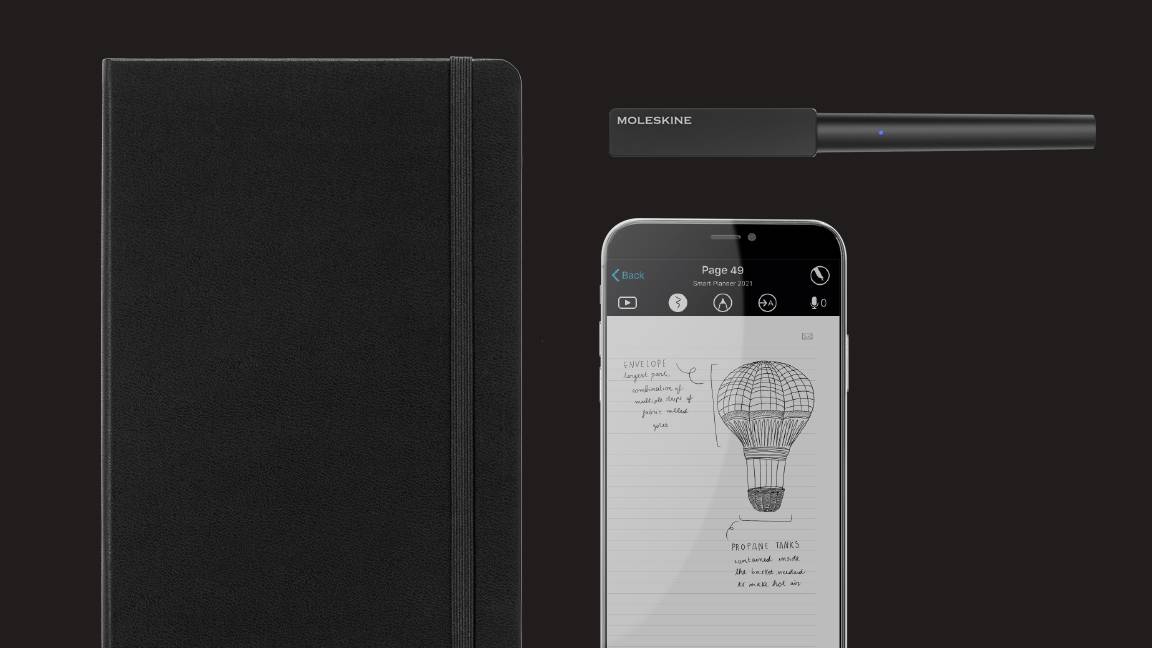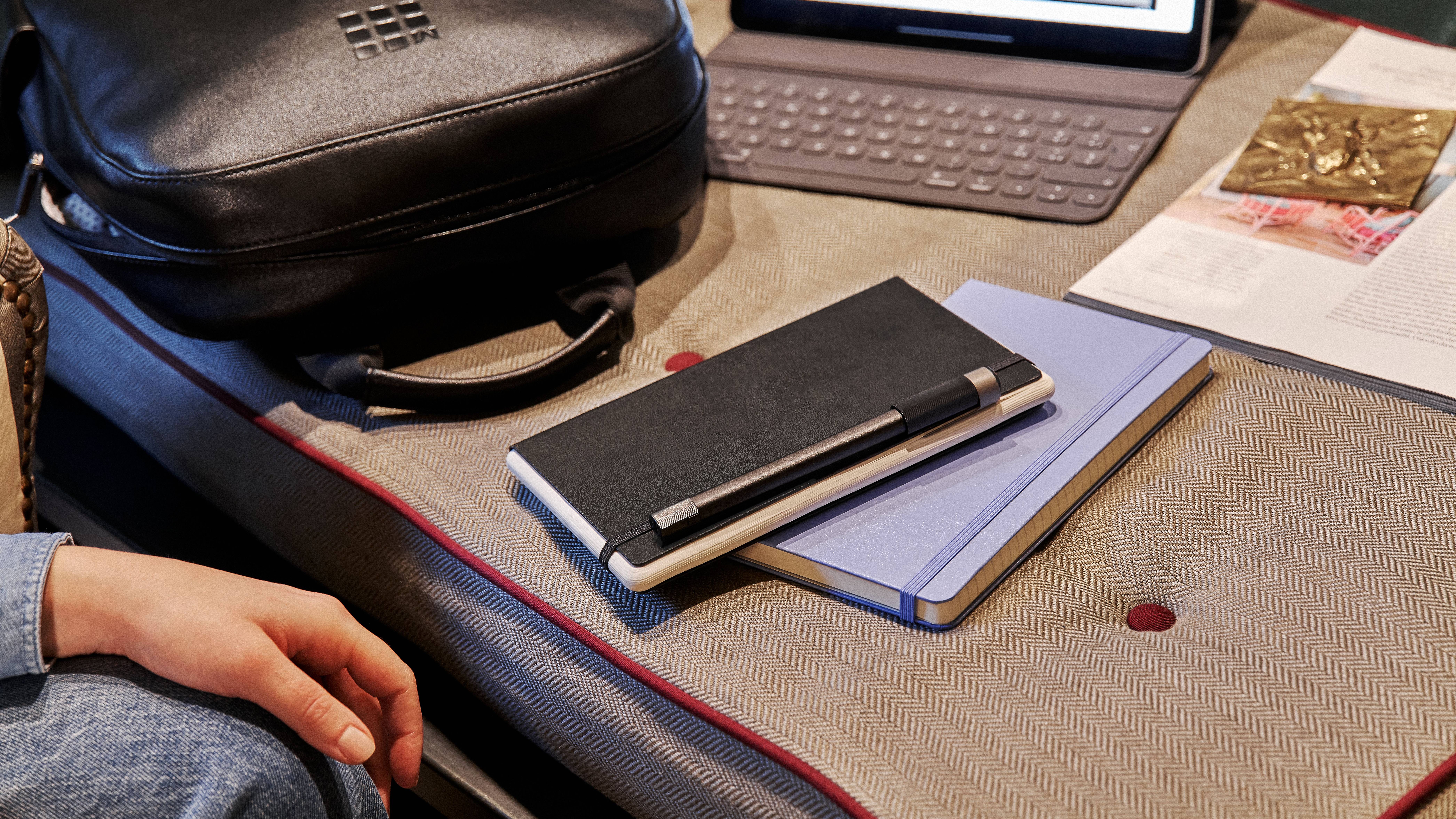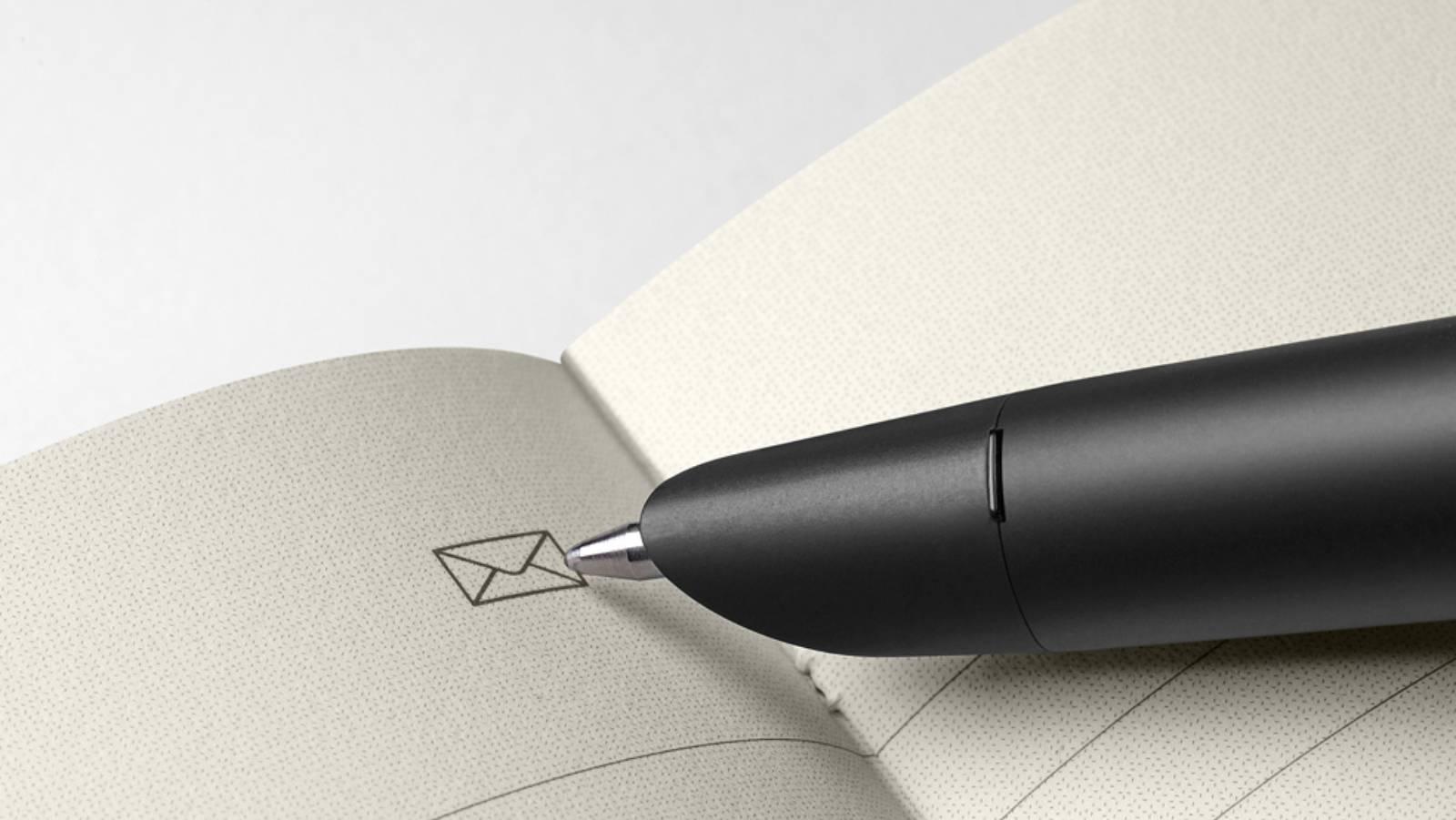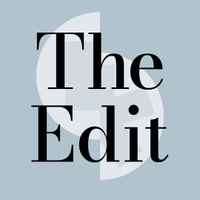

Although pen and paper will always retain its lustre, there are ways of getting ideas down that preserve our analogue actions in digital form. Using an Apple Pencil or Microsoft Pen, for example, has become a ubiquitous way of taking notes and annotating files. While these elegant gadgets benefit those with precise penmanship, those of us who are more familiar with the jot and the scrawl aren’t quite so lucky.
The fleeting sense of transient thought is one of the driving forces behind the new Moleskine Smart Writing System, version 2.0 of a pen and notebook combo that was first launched in 2016. Whereas other iterations of ‘digital ink’ involve screens that mimic paper yet can be wiped and re-used, the Italian stationery company has developed a technology that retains its iconic product at its core.

Moleskine was set up in Italy in 1997 by Francesco Franceschi. The company has its devoted fans – search #moleskine to see the myriad forms of creativity that can be contained within its modest pages. The company’s CEO Daniela Riccardi, has plenty of experience at the helm of luxury brands. She wants the company to reach new levels of connectivity – ‘from brain to page’ - without losing the all-important tactile quality of pen on paper, stressing the bond that Moleskine has made with creative types of all different stripes.

Moleskine’s Smart Notebooks are, to all intents and purposes, identical to the old-school black bound notebooks that made the brand’s name. However, there’s a crucial different, because the FSC-certified forest-sourced paper is embedded with a micro-thin mesh, or Ncodes. These in turn gives location data to the proprietary pen, essentially a black biro with a rubberised barrel, magnetised charge point at one end and a sensor beneath the (replaceable) nib. When charged up and paired with the Notes app, the sensor allows the pen to store the progress of the nib across the page, as well as identify which page you’re actually on. On your smartphone, you’ll see your scribbles and sketches appear, line by line, in real time.

That’s not all. The Moleskine Pen is a substantial upgrade on the first model, with more accuracy and a bigger battery. The Notes app can also hold audio notes, and if your handwriting is sufficiently neat, it does a good job of transcribing your words into raw text. All this can be edited and exported, of course, as can time-lapse films of your words appearing one by one, or sketches being conjured up from nothing.
The supplied refill writes in black, but you can change the digital ink colour as you go along. Cloud sync is standard, and the ability to upload a notebook once it’s finished, then search its contents for keywords, etc., is a surprisingly useful feature for a disorganised journalist.

This time around we didn’t try Moleskine Journey, a subscription service that uses the pen input to correlate with a number of different features, including calendars and reminders, as well as ‘personal development’ tools like keeping track of feelings and habits. There’s also the Smart Planner digital/analogue diary system, which presumably still works with the new pen.
Sign up to the T3 newsletter for smarter living straight to your inbox
Get all the latest news, reviews, deals and buying guides on gorgeous tech, home and active products from the T3 experts
There’s an undeniable sense of magic about seeing your handwriting being replayed back to you, especially when you’re looking at notes from months or even years before. The beauty of a well-made notebook like a Moleskine is that you’re unlikely to jettison it once full; quality of materials seems to encourage quality of thought. The added layer of digital function might not to be everyone’s taste but use it wisely and it could become a powerful creative tool.
The Moleskine Smart Writing Set costs £229 and you can buy it at Moleskine.com.
This article is part of The T3 Edit, a collaboration between T3 and Wallpaper* which explores the very best blends of design, craft, and technology. Wallpaper* magazine is the world’s leading authority on contemporary design and The T3 Edit is your essential guide to what’s new and what’s next.

Jonathan Bell is Wallpaper* magazine’s Transport and Technology Editor, a role that encompasses everything from product design to automobiles, architecture, superyachts, and gadgets. He has also written a number of books, including Concept Car Design, 21st Century House, and The New Modern House. His interests include art, music, and all forms of ephemera. He lives in South London with his family.
-
 A new age of humanity wins the Sony World Photography Awards 2025
A new age of humanity wins the Sony World Photography Awards 2025Zed Nelson's Anthropocene Illusion highlights the influence of humans on the environment and the artificial spaces left for wildlife in a powerful set of images to win this year's SWPA Photographer of the Year
By Mat Gallagher
-
 How to watch Mario Kart World Direct – everything you need to know about the Switch 2 launch game
How to watch Mario Kart World Direct – everything you need to know about the Switch 2 launch gameNintendo will host a new Nintendo Direct presentation this week, here's how to watch it live and what to expect
By Rik Henderson
